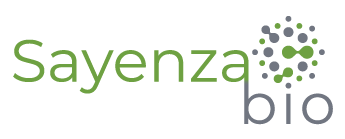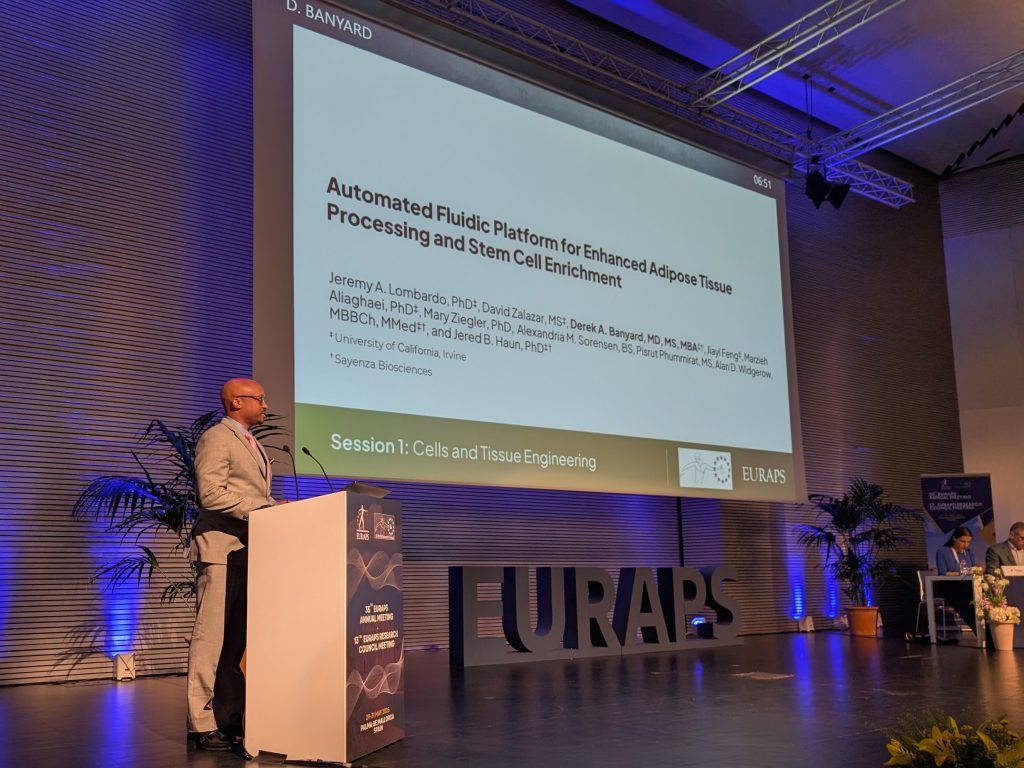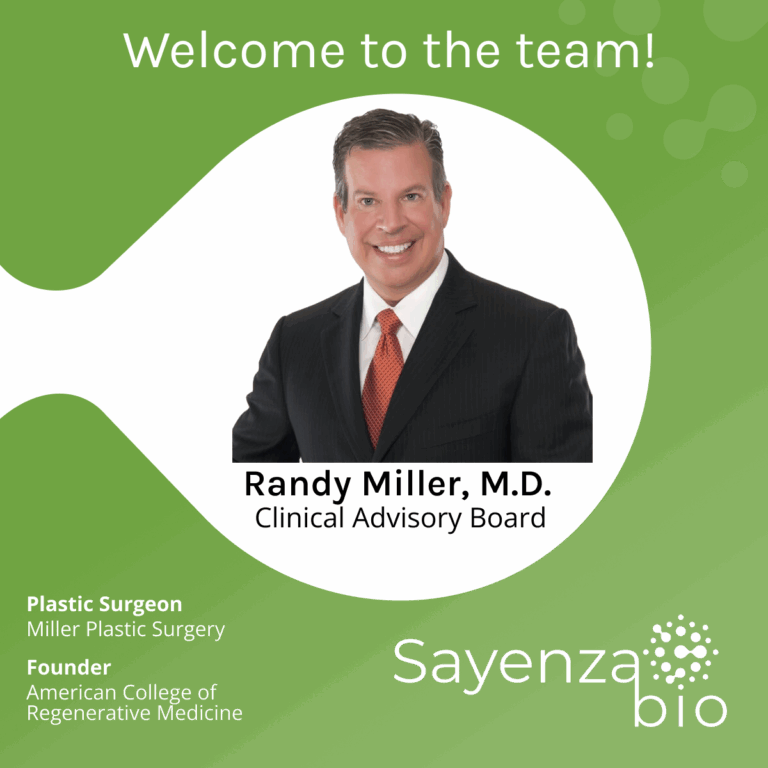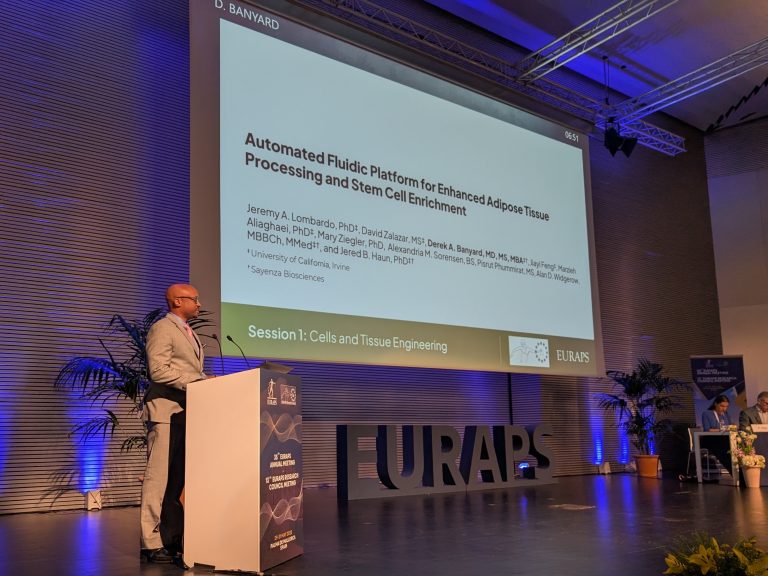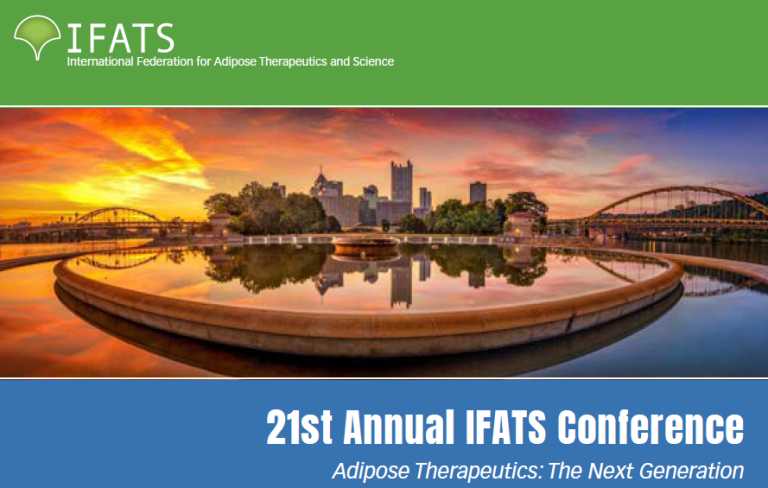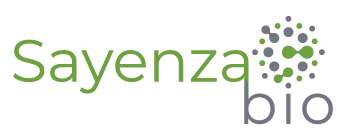At the end of May, I had the distinct honor of presenting at the EURAPS Research Council meeting in Palma de Mallorca, Spain — arguably one of the most respected gatherings in European plastic surgery. My talk, “Automated Fluidic Platform for Enhanced Adipose Tissue Processing and Stem Cell Enrichment,” was part of the opening session on Cells and Tissue Engineering, and I left the stage energized by the scientific depth and collegial spirit that defined the entire week.
This wasn’t just another conference. From the moment Dr. Ramon Llull welcomed us with the rallying cry that “science is under attack,” it was clear this meeting had a purpose beyond posters and podiums. He reminded us that plastic surgeons — with our hands in the OR, minds in the lab, and creativity spanning both — are uniquely positioned to push back. The scientific rigor on display throughout the program was a testament to that challenge.
In my own session, I shared Sayenza Biosciences’ approach to bringing automation and standardization to adipose tissue processing. The ARC-1 platform we’re building aims to give clinicians enriched, high-retention fat grafts through a closed, sterile, and operator-independent system. I believe this kind of standardization is essential — not just for aesthetics, but for unlocking the regenerative potential of fat in wound healing, orthobiologics, and beyond.
It was validating to see a number of talks echoing this same theme:
-
Nanofat improving wound healing post-irradiation.
-
Adipose-derived exosomes enhancing tissue repair.
-
Researchers exploring how patient characteristics impact regenerative capacity.
There’s a clear consensus forming that adipose tissue — when processed thoughtfully — is more than filler. It’s biologically active, potentially therapeutic, and ready for broader clinical translation.
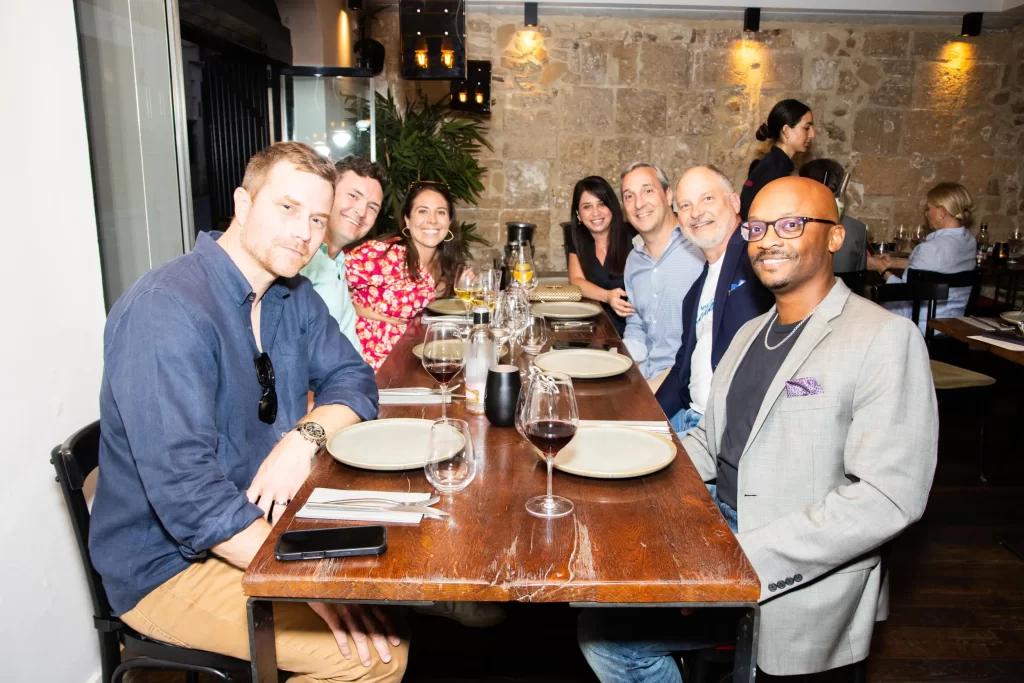
Beyond the science, the Presidential Panel on artificial intelligence was one of the most thought-provoking sessions I’ve attended. Dr. Berenguer shared how AI is already improving outcomes in microtia surgery. Dr. Selber reminded us that over 10,000 da Vinci robots are performing millions of procedures worldwide — and that fully autonomous robotic surgery has already happened at Johns Hopkins. Dr. Paul Cederna, whose work on upper limb prosthetics continues to amaze, pointed out the unique challenge ahead: machine learning algorithms are now so advanced that they can predict human hand movements before the brain even registers them. How the FDA keeps pace with this future is a question we all need to consider.
At Sayenza, we’re deep in the weeds building our minimum viable product. Later this year, we plan to submit to the FDA via the 510(k) pathway. But like many early-stage medtech companies, we’re also seeking the right funding partners to help us cross this finish line. The energy at EURAPS reinforced why this work matters — and what’s possible when science and clinical innovation align.
To everyone I connected with in Palma: thank you for the warm conversations, sharp questions, and shared excitement. I left inspired, challenged, and more certain than ever that the future of plastic surgery — and regenerative medicine — is going to be built by the people who aren’t afraid to ask hard questions and design better answers.
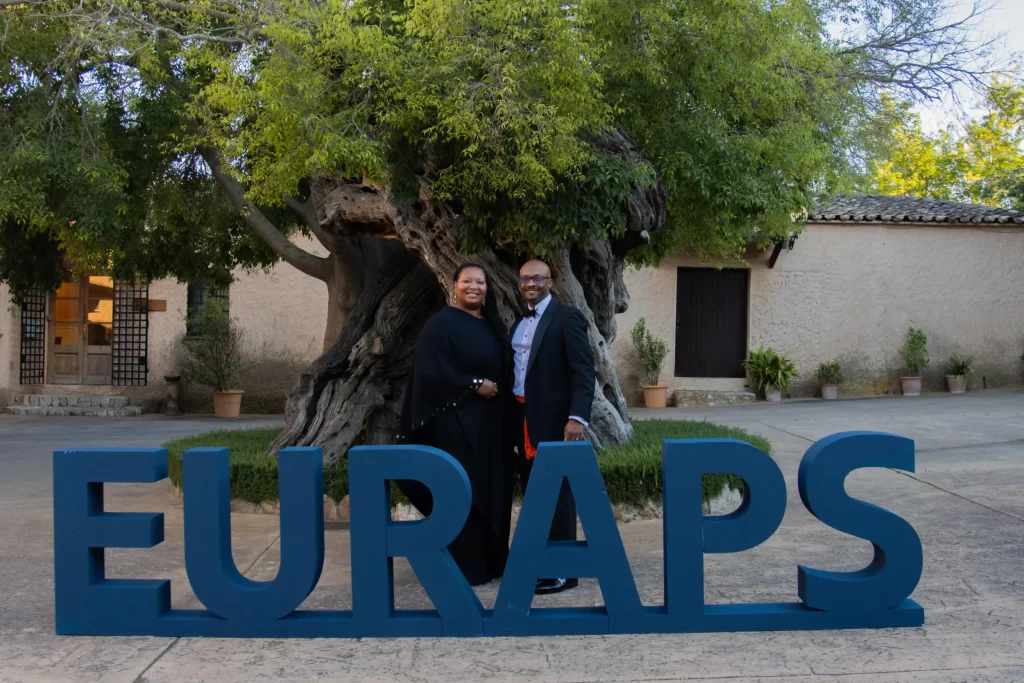
See you all at the next one.
—
Derek Banyard, MD, MS, MBA
Founder & CEO, Sayenza Biosciences
